
St John the Baptist
(St John-on-the-Wall)
CITY
Bristol
The church of St John the Baptist is known to Bristolians as St John on the Wall, and incorporates the only surviving medieval gateway on the city walls. There were formerly two other churches built over the medieval gates, St Nicholas rebuilt in the C18 when the gateway was removed, and St Leonard was demolished in 1771. Both of these had the chancel over the gateway, St John's is unusual in that the tower and spire stand over the gate. Immediately to the west was another medieval church, St Lawrence, but this was demolished in 1580. St John the Baptist was first mentioned in 1174 and is believed to have been founded c1100. All was rebuilt c1380-1400 except for the eastern half of the lower church which is earlier C14 work.
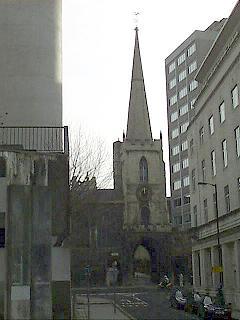 |
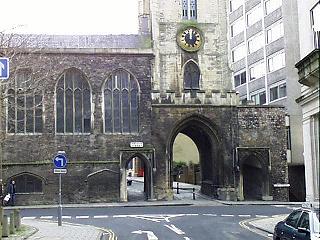 |
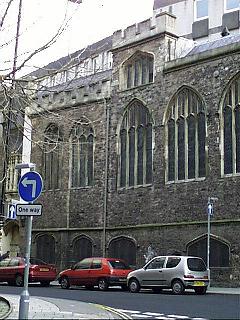 |
The post war reconstruction of Bristol has not been kind to this church, it is surrounded by office buildings some of the worst kind, and the spire tries to compete with some of them. The worst is the block immediately west of the tower. This northern front is the face it showed to the visitor in medieval times. The gateway itself still has grooves for the portcullis and has a central vaulted arch for wagons and carriages and two pedestrian walkways. Access to the lower church is only possible from "outside the city" but the larger windows of both the crypt and the upper church already show the more peaceable times when the church was built, although the cliff-like wall still shows the defensive nature of the city walls. One local feature is preserved in St John's which was once also evident at other churches in the city (St Nicholas and St Thomas, shown on Millerd's Map of 1673), in the taller central-tower like clerestory bay with large windows which presumably lit the rood inside.
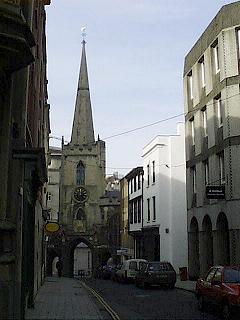 |
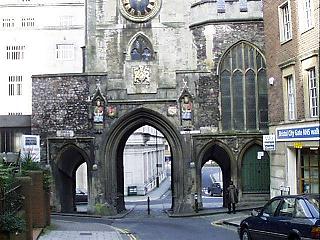 |
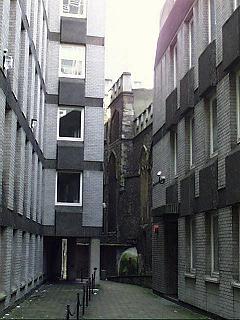 |
From the gate Broad Street climbs steeply up towards Christ Church (see picture on that page) and seen from inside the city the church seems better treated. Although the NatWest bank buildings surround many of the small streets to the south, the narrowness has been preserved (above right). The statues in the niches above the carriageway arch are Brennus and Bellinus, mythical founders of Bristol. The entrance to the upper church is immediately east of the gate and there are several steps up to the door and further into the church itself. This arrangement dates from 1828: there are traces of the original west entrance to the church in the eastern pedestrian walkway of the gate.
The Upper Church
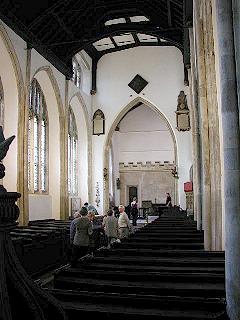 |
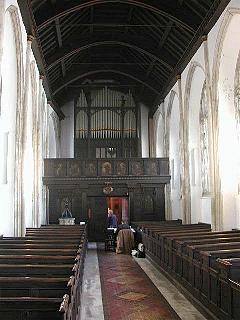 |
The interior is noticeably plain but uniform in appearance. In medieval times there would have been much more colour. The side windows are recessed, and collectively the pointed arches give the illusion of arcades. The chancel was rebuilt after the reformation, creating a vestry behind the east wall accessed by two small doorways. The pews date from 1621. The gallery is later C17 and originally stood one bay further east, moved back in 1883 when new stairs were made and the new organ installed.
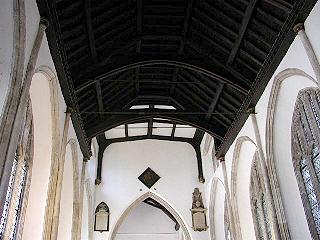 |
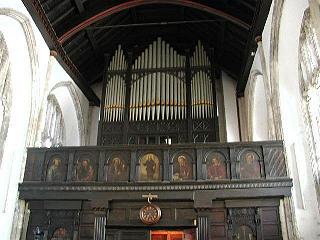 |
The taller clerestory bay is clearly visible inside. Closer examination of the gallery reveal seven painted panels, possibly by a dutch artist (l to r St Peter, St Matthew, St Luke, St John Baptist, St Mark, St John Evangelist and St Paul).
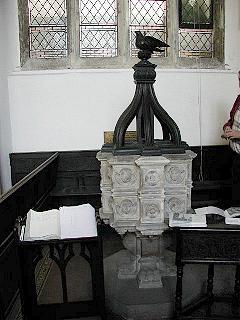 |
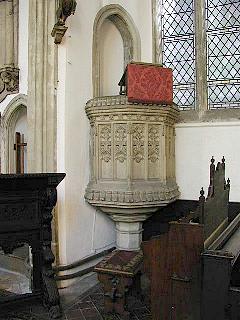 |
The font dates from 1624 and has winged cherub heads and rosettes in roundels; the cover is Jacobean. The pulpit is a fine pannelled example of the C15 and accessed from through the chancel arch. Above on a bracket is a unicorn presumably once supporting a since-vanished Royal Arms (the lion is opposite on the other side of the chancel arch) and a rare survival of an hourglass, turned to time the sermons.
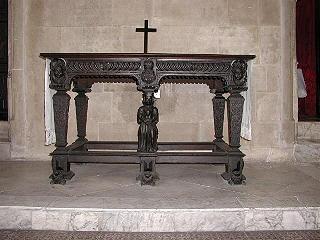
The "low-church" nature of services here is encapsulated in the communion table, a beautiful example from 1635 (and cost £3 14/-, or £3.70p in today's money) where once would have been a high altar and reredos.
|
The tomb to Walter Frampton used to stand in the centre of the church, but is now in a recess on the north side of the sanctuary. The translated inscription reads "Here lies Walter Frampton, founder of this church who died in the year 1388" . Opposite is the brass to Thomas Rowley who died in 1478 and his wife (died c1470) who was vestryman at St John's.
The Lower Church or Crypt
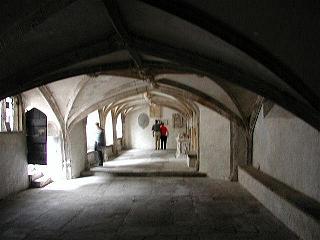
The crypt was dedicated to the Holy Cross from the Guild of the same name which held its services here. There used to be a screen dividing it into nave and chancel. It became a prestigeous place of burial, but the names of people whose tombs survive is lost to us today.
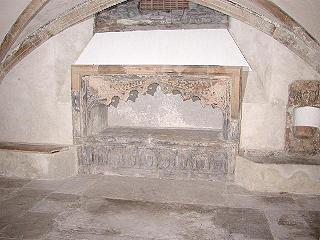 |
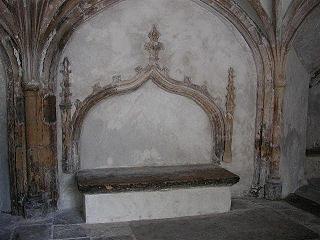 |
Examples of the fine carving are shown in the pictures above. Towards the east end of the crypt is the fine tomb chest with alabaster effigies of a merchant and his wife.
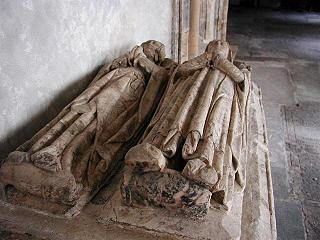 |
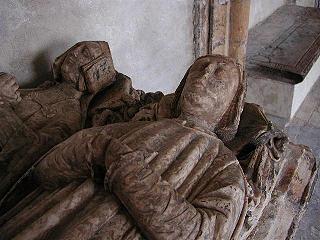 |
The church is no longer used for regular services and is vested in the Churches Conservation Trust. It is generally open Tues-Fri 1100-1600 from April to October.
Page created 18th January 2002